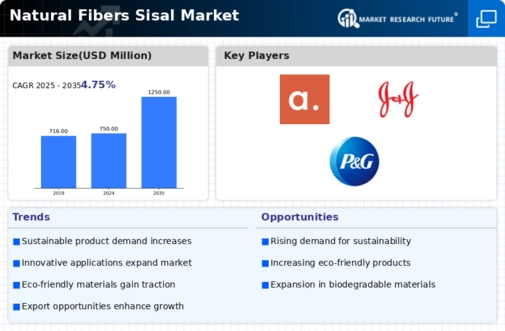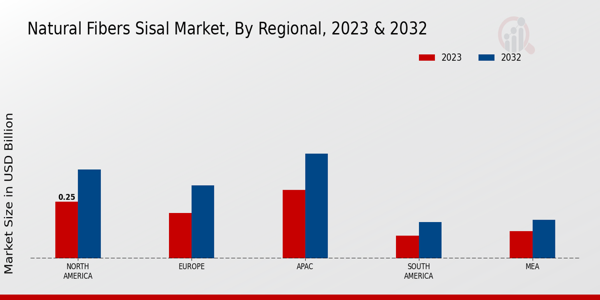The Natural Fibers Sisal Market is gaining significant traction owing to the increasing demand for eco-friendly alternatives in various industries. The sisal fiber, derived from the Agave sisalana plant, is recognized for its durability, strength, and versatility, making it a preferred choice in applications ranging from textiles to construction materials.
The competitive landscape within the market showcases a diverse range of players who are striving to capitalize on the growing awareness surrounding sustainability and natural products.
Companies in this arena focus on enhancing their production capabilities, improving quality, and expanding their geographical footprints to cater to the rising consumer interest in natural fibers.
The strategic initiatives undertaken by these players often involve technological innovations, collaboration with local farmers, and investments in eco-friendly practices to differentiate themselves from competitors.
Sisal Bahama stands out in the Natural Fibers Sisal Market with its established market presence and strength in product quality. The company has successfully positioned itself as a leader in the production and supply of high-quality sisal fiber, which is critically acclaimed for its robust characteristics.
Sisal Bahama's strategic focus on maintaining sustainable farming practices has fostered strong relationships with farmers, ensuring a steady supply of raw materials while promoting environmental responsibility. Furthermore, its commitment to innovation and quality control allows the company to offer a wide range of sisal products tailored to meet diverse customer needs.
This approach not only boosts customer loyalty but also enhances the company's image as a trusted supplier in the sisal market. With strong logistics and distribution networks, Sisal Bahama has effectively expanded into international markets, mitigating risks associated with domestic demand fluctuations.
Agro Products and Agencies is another prominent player in the Natural Fibers Sisal Market, notable for its strategic positioning and extensive market reach. The company specializes in sourcing and exporting high-quality sisal products, including raw fibers, twine, and specialty products.
Agro Products and Agencies leverage its robust supply chain management and strong relationships with sisal growers to ensure consistent quality and timely delivery of products to its customers.
The company has also focused on diversifying its product offerings, catering to various industries, including automotive, textiles, and agriculture, which has further solidified its market standing.
Its commitment to sustainable practices allows Agro Products and Agencies to appeal to environmentally conscious consumers and businesses alike.
By continuously seeking ways to innovate and improve processes, the company remains agile in responding to market demands, securing its competitive edge in the Natural Fibers Sisal Market.














